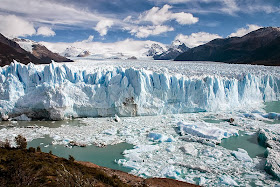Executive summary by darmansjah
Yellowstone is home to more geothermal features than
any place on Earth.
LIVING COLOR
Colorful, pigmented bacteria rings
Yellowstone’s Grand Prismatic Spring, the country’s largest hot spring. The
sterile water in the center is a simmering 160ᵒF (71ᵒC).
ANIMAL AND MINERAL
Wolves, such as this male calling
his pups roams Yellowstone in 11 overlapping packs. Mineral terraces form from
dissolved limestone that rises through hot springs, solidifying when the water
hits the open air.
Wyoming, Idaho, and Montana. The
world’s first national park-established in 1872-preserves the continent’s
largest supervolcano, the active Yellowstone caldera. Within Yellowstone
National Park’s 3,572 square miles (8,992 sq km) of stunning scenery are at least half of the world’s
geothermal features, including more than 300 geysers an more than 10,000 hot
springs, fumaroles, and mudpots. The park holds the largest concentration of
mammals in the lower 48 states, with grizzly and black bears, gray wolves
(restored in 1995), bison, elk, wolverines, and mountain lions. The Old
Faithful geyser erupts 17 times a day, propelling thousands of gallons of steaming,
pressurized water about 130 feet (40 m) into the air to the oohs, aahs, and
gasps of visitors.









